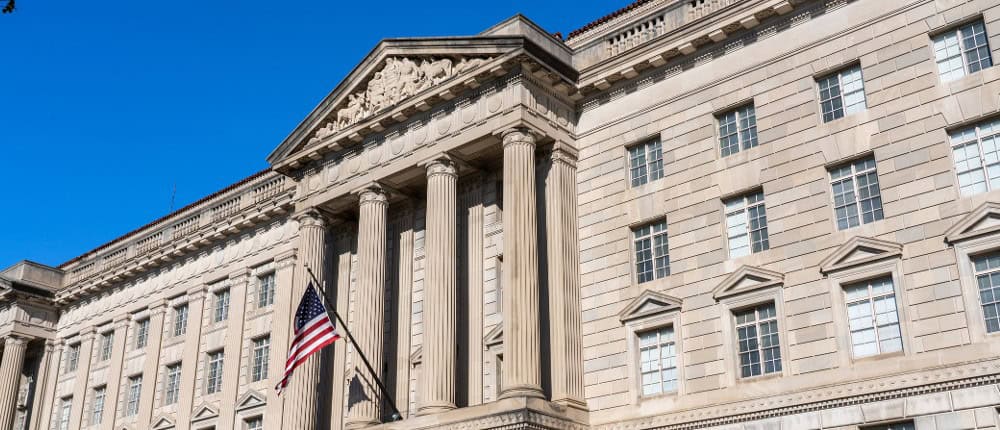Will the U.S. economy experience a soft landing or a recession in 2024? Data gives conflicting views on the direction.
The uncertainty surrounding 2024’s macro conditions are coming into focus as year-end approaches. Street analysts are making predictions surrounding the potential for a soft-landing, citing potential for Fed rate cuts due to decelerating CPI, weaker than projected PMI figures, and modest increases in unemployment. These conclusions could be biased or may be stale given recent Black Friday consumer spending figures: annual retail and online sales climbed 2.5% and 7.5%, respectively. Further evidence discussed in this report shows domestic borrowers are resigned to higher rates and they continue spending. This behavior suggests that inflation may not be fully arrested, and there may not be any clarity on rates until the Fed has digested the totality of holiday shopping figures. Macro indicators have largely plateaued, which clouds the picture and offers little indication of future direction.
Companies switch to the defensive as they face ambiguity.
Since the most recent S&P 500 financing gap trough in May of last year, there were increases each month since, and the reading crossed into positive territory exactly one year later. Importantly, this is the first positive reading since exiting the Great Financial Crisis. Companies are now more inclined to hold onto their free cash than reinvest it, perhaps signaling management’s uncertainty of the short-term. However, this behavior could bring negative repercussions in the long-term should they stay stagnant for too long. The same chart shows the S&P 500 returns to shareholders reached a peak in December of 2022 and has declined steadily in each successive month. This reflects company management’s unwillingness to finance shareholder returns and/or debt-funded M&A. Companies are likely staying defensive due to the uncertainty of the economic outlook and want to be financially prepared should they see material deterioration. As further evidence to warn corporations, the November Purchasing Manager’s Index (PMI) reading came in at 49.4, a decline from October’s figure of 50, signaling the start of another contractionary cycle.
Markets rally and high rates prove positive for money funds.
Since our last publication, equity markets have rallied, and bond markets have ground tighter with spreads in the Bloomberg Barclays US Agg tightening 25 bps since June. Despite the positive catalysts for spread tightening, we have seen negative signals from measures of risk. The Markit CDX North America Investment Grade Index has jumped noticeably through the end of October; however, we note that CDS spreads tend to be more sensitive to geopolitical events than actual credit quality measures. In the equity markets, valuations appear well priced as the forward P/E for the S&P 500 is now sitting near its average for the last business cycle. However, forward EV/EBITDA shows that the value of debt has injected a disparity into valuations. The fact that the forward EV/EBITDA remains much higher than its prior cycle average signals that companies have added debt and have been reluctant to pay it off or term it out. This trend fits within the trends seen on corporate balance sheets, wherein companies stockpile cash as part of defensive positioning. The uncertainty in the rate environment will likely keep companies from paying down debt when they can earn a higher return on cash. Higher rates haven’t just influenced company behavior though, higher rates have continued to be positive for money funds managers as well. Total CP outstanding has steadily increased since our last publication and money market funds continue to bring in new money, a trend that continues in the face of aggressive deposit pricing from US banks and a plateau in total new deposits. The directional flows analysis does show a bit of softening in the trend for banks, but money continues to flow into the money funds instead of the banks.
Consumers appear to be finally feeling the sting of rising rates, as credit card and student loan delinquencies show warning signs.
It’s beginning to appear that some of the negative effects of the most aggressive rate-hiking cycle in recent history are beginning to take hold on the U.S. consumer. This past quarter, 90+ day delinquencies on credit card debt increased meaningfully above pre-pandemic levels, and net charge-offs have recently ticked back up to near pre-pandemic averages. We expect these trends to continue due to a lag in the charge-off data which suggests that the more rapid growth in delinquencies has yet to be reflected in net charge-offs. Credit card rates have increased with historically unprecedented speed and severity according to the St. Louis Fed, rising from 14.56% in February 2022 to 21.19% as of August 2023. This represents the steepest and most significant increase in the ~30 years that the Fed has been tracking this data, which may be a significant contributor to rising delinquency rates and is likely to push them further above pre-pandemic levels in the coming quarters. Another significant measure of consumer lending health is student loan debt, which is historically the second largest proportion of household debt behind Mortgages. Data representing student loan delinquencies over 90 days is not accurately reflected due to temporary federal forbearance on all public student loans. However, now that nationwide student loan forgiveness is no longer effective, student loan delinquencies are very likely to increase to at least pre-pandemic levels of 11%. We would expect this to be a baseline with significant potential to go higher, as there are several factors that may increase delinquencies above 2019 levels including higher rates, and the behavioral impact of people neglecting to make payments due to the temporary forgiveness. Overall, some pain for the consumer was an expected and largely inevitable consequence of one of the most aggressive U.S. rate hiking cycles in history; and while we do not yet see any significant cause for alarm, we will continue to closely monitor the health of U.S. consumer lending.
Tighter standards and softening demand for consumer lending.
The October 2023 Senior Loan Officer Survey indicated that banks have tightened lending standards, and while demand for loans remains positive, its rate of growth has declined. In response, the total amount of U.S. consumer loans outstanding plateaued in the most recent quarter. Real estate lending plateaued as borrowers faced high mortgage rates and elevated home values. However, the S&P CoreLogic Case-Shiller National Home Price Index rose to a record level due in part to a shortage of homes available for purchase. This increase in home prices could also be due to borrowers becoming comfortable with a higher rate environment or from those that refrained from borrowing in a more uncertain rate environment. Auto lending increased slightly and was driven by extending credit to only the highest quality borrowers. Loan origination increased Q/Q for the 760+ FICO band borrowers, while declining by 6% for sub-prime borrowers.



